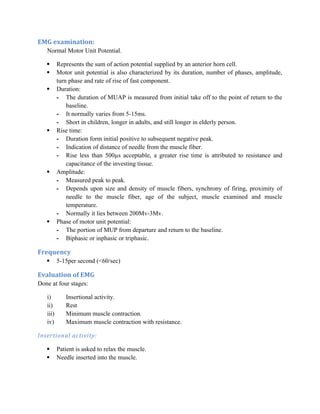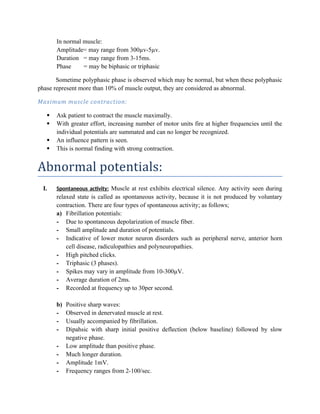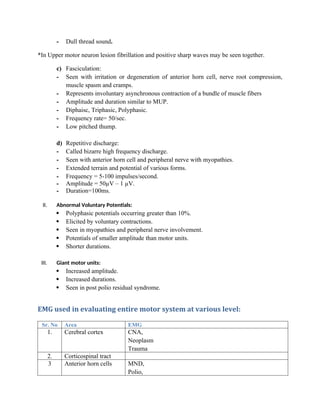Electromyography (EMG) assesses electrical activity in muscles and nerves, aiding in diagnosing neuromuscular diseases and evaluating muscle function. The process involves recording motor unit potentials through various electrode types and analyzing their characteristics during different muscle states. Clinical relevance necessitates careful observation of muscle conditions to ensure accurate results, particularly regarding insertional activity and muscle relaxation.






